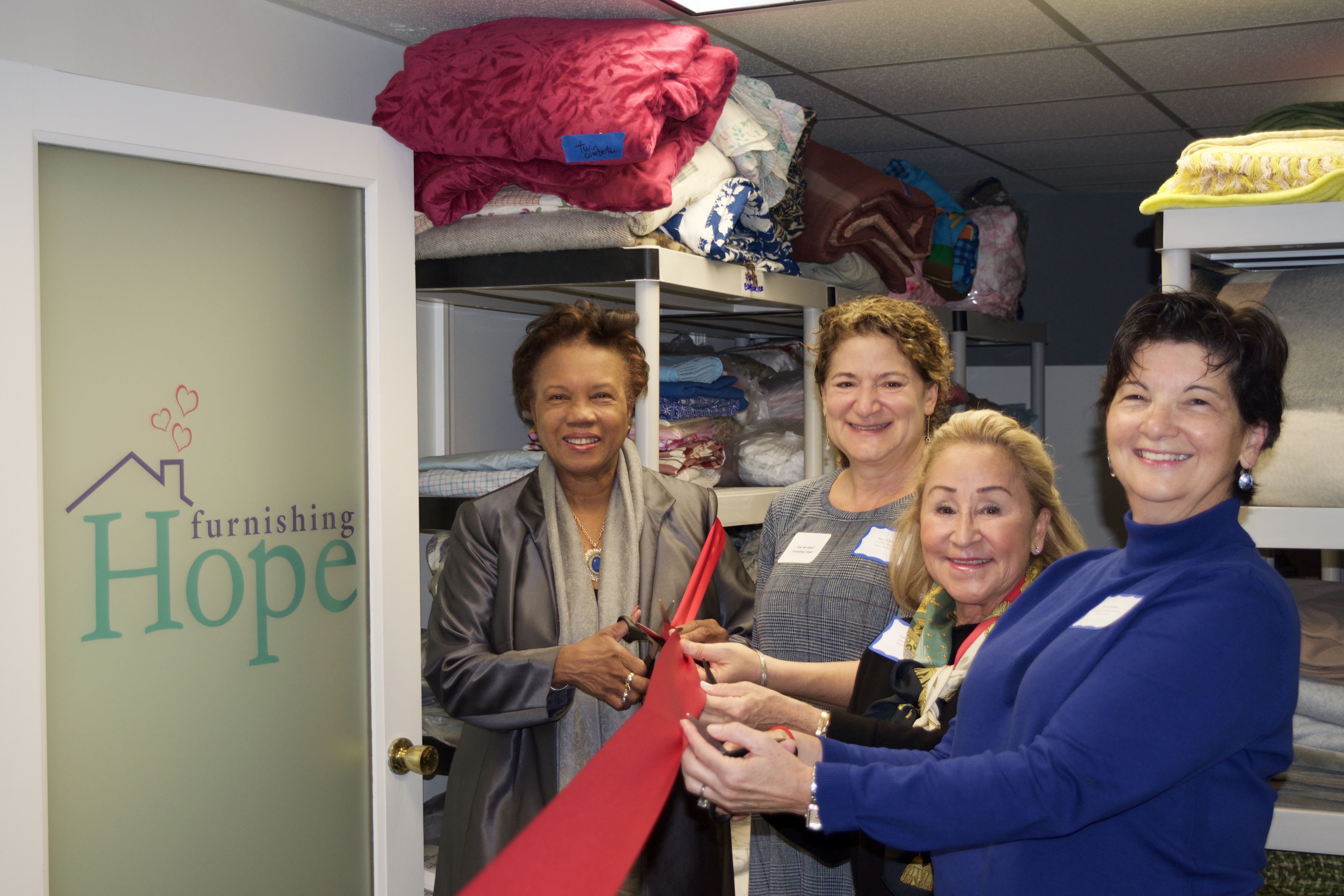On Saturday, Oct. 28, the nonprofit Furnishing Hope of Massachusetts cut the ribbon for its new location in Harvard Square, a bigger office than its previous location.
Executive Director Suzy Palitz’s goal is to help families furnish their new house into a home. So in 2013 she started the nonprofit in Cambridge. Today Furnishing Hope has serviced an average of about 50 families per year and looking to reach 75 families this year.
“We needed more space to be able to accommodate that growth,” said Palitz. “We needed space to have meetings with agencies and potential donors.”
The nonprofit has been providing families free furniture that it collects and refurbishes with the help of volunteers. Its moving company service partners, Humboldt and Gentle Giant, freely delivers the furniture to houses from its warehouses in Canton and Readville. Families are referred by the organization’s networks of social service partners, like the domestic violence shelter, Cambridge Family & Children’s Service and Transition House, or Horizon for Homeless Children.
“There’s so many people who are involved in making it happen,” Palitz said. “It takes a village.”
Volunteers, representatives of agency partners, and community members gathered at the open house and ribbon cutting to see the new space at 131 Mount Auburn Street. Harvard Square Executive Director Denise Jillson gave welcoming remarks to the nonprofit at the ribbon-cutting ceremony.
Having seen homeless children and families get housed back when Palitz volunteered at Horizon for Homeless Children, she saw that they still didn’t have resources to get furniture and were sleeping on floors. “It just seem so wrong to me that that was happening,” she said. “We tend to think of housing as the goal, as the end point, and it’s really not.”
Although Palitz has volunteered with homeless children in the past and has a background in child psychology, it’s really the passion of being a mother to her children that drives her to create a warm home environment for families to live in.
“It’s one thing to have an apartment, to have four walls, a ceiling, and a floor, but it’s another thing to have a home where you can have a table to sit at to have a meal or your child have a light or a lamp so they can use it to do their homework, or to have curtains on your windows,” Palitz said.
She realized that kids coming out of homelessness are vulnerable with stress from having seen so much transition and trauma, which she says leads to not having good night sleeps and hard school days.
“It makes such a difference to have a safe and comfortable place to come home to,” Palitz said. “It’s important for their dignity. It’s important for a mom to be able to sit next to her child to read a book or to help with homework.”
The nonprofit has an online furniture bank for families to shop through, as well as provides a starter-set of home goods for kitchen, bedroom, and bathroom. Most items are donated by individuals and businesses in the community, and others are purchased, like pillows. Used mattresses are not accepted for donation.
Courtney Gomez Families director of family support and stabilization at Cambridge Family & Children Service (CFCS), who attending the open house and spoke at the ribbon cutting ceremony said CFCS refers anywhere from five to 10 families per year, and have been partners with Furnishing Hope for about three years now.
“One of the really great things about Furnishing Hope is it’s for families that need a lot of items,” Gomez said, “Furnishing Hope is really for clients that are moving to an apartment and have basically nothing and need a little bit of everything and maybe aren’t able to able to afford a truck to go and pick up donated goods.”
Gail Roberts, who also spoke during the ribbon cutting ceremony, sells residential real estate and is a board member of Furnishing Hope. She tells her clients who are moving out of their homes and looking to get rid of their furniture about the nonprofit.
“It’s a great way for people who are moving out of their house and downsizing to donate, and it’s donating for a good cause,” Roberts said. “They get to do something good with stuff that they’re not taking with them.” She said she’s seen that many of her clients do donate.
Coming up in the spring, the nonprofit will hold a linen drive, because Palitz said that’s what’s the highest in demand and lowest in supply. For instance, a family of six would need at least six pillowcases and blankets, as well as at least six bath towels.

Leave a Reply
You must be logged in to post a comment.